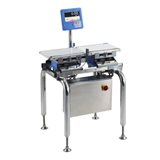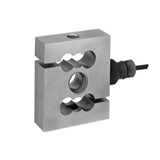By David Robertson, from the http://www.dia.org.au/ Design Institute of Australia
‘On an industry wide level the industrial design sector needs to turn its attention to the promotion of its clients’ interests, the support of Australian manufacturing and supporting export promotion mechanisms, rather than the broad promotion of design. It needs to channel information to industry about the design techniques, processes and strategies required for international competitiveness. It needs to act as a knowledgeable conduit to the international manufacturing environment to enable entrepreneurial activity in Australia to result in world competitive products.'
The first of these is the most fundamental. The profession must turn its attention away from the preoccupation of the last fifty years, the promotion of design, and concern itself with the survival and revitalisation of the manufacturing sector. Industrial design’s future in Australia is firmly linked to the manufacturing sector’s fortunes. The challenges are formidable. The industrialisation of Asia, the shift to a service economy in the Western world, first world societal attitudes to work; large scale trends that seem overwhelming. The industrial design profession has a vested interest in supporting the manufacturing sector and helping it find a path through these global trends.
Why should manufacturing be nurtured?
The fundamental question for Australia is whether manufacturing is required at all. Some economists maintain that there is strong evidence to demonstrate that a large manufacturing sector is not a necessary component for a healthy post-industrial economy. They present the decline in manufacturing and the growth of the service sector as an indicator that our economy is on the right track. As manufacturing plays a smaller role in economic growth (now only 11% of GDP and falling) this point of view gains strength.
However there is considerable support (and evidence) for the position that manufacturing is an essential component of the economy, that it provides a foundation role that enables the existence and success of many other sectors. Manufacturing is a driver of knowledge and innovation, it contributes over half of private sector R&D. Manufacturing companies are more likely to be involved in technological innovation than companies in other sectors. Manufacturers engage in higher levels of vocational training spreading new knowledge both within their sector and in the service sectors that interact with them. Manufacturers acquire new technologies that both channel technical knowledge into the community and produce productivity gains that exceed those of the service sector. Manufacturers drive the desire and uptake of new technological knowledge to fuel their competitive position which supports employment in the sciences, engineering and design disciplines. In short manufacturers are significant catalysts for innovation, research and technical change.
In public debate Australia desires to be a ‘Knowledge Nation’ and takes great pride in the quality and international success of its education sector in passing on knowledge. Manufacturing, as a sector, is a significant driver of the development of new knowledge.
Manufacturing and the service economy
An important consideration in the economic debate is the degree to which the health of our growing service economy is linked to the health of the manufacturing sector. This linkage is graphically illustrated by the fate of economies in regional centres when a major manufacturing employer fails. Many service jobs are directly linked to manufacturing and many jobs once performed by in-house employees of manufacturers have become outsourced service jobs.
The nature and scope of our manufacturing sector directly affects the type and quality of services required. This in turn either enables or limits the ease with which businesses can innovate and develop new products in Australia. Services also benefit from the export activities of manufacturers. The export of goods stimulates the export of services required to support them.
The most linked sector
The manufacturing sector has high levels of linkage with other sectors of the economy, it uses the outputs of the other sectors to produce goods at a far greater ratio than any other sector. Manufacturing is involved in the production of capital goods and inputs for other industries. This means that increases in technology and efficiencies in manufacturing magnify the efficiencies of other industries. Expanding the output of manufacturing increases economic activity and jobs faster than expanding the output of other sectors.
So manufacturing is a foundation to economic activity and an enabler of a range of other industries. As a sector it has stronger linkages with other sectors, is best at transferring new technologies to the economy, and is central to transferring support skills (management and technology skills) to other sectors of the community including the services sector.
World growth in exports is in the high technology manufacturing area. Australia is not well positioned to compete for export growth in this area. Too much of our manufacturing is in the low and medium technology area. This is one of the major challenges to growing the strength of the manufacturing sector in Australia. Australia’s trade deficit is directly affected by our desire to import products in the high technology area and our inability to generate import replacements.
Free market or Government intervention?
The obvious question that arises in these times of economic rationalism is why should Government get involved? After all the government’s role is to provide services and facilities to the community which Australians desire or need as a community and are not able to be provided through free enterprise.
The justification for Government involvement is that free enterprise, and in particular global commerce, doesn’t account for the value to Australia of the foundation and linkage role that manufacturing plays in the economy. Commercial decisions taken in one industry don’t consider the flow on effects that they will have in other industries and other parts of the economy. Considering these things, what is the role of Government?
This is not about propping up non-viable businesses in the Australian community, it is about acknowledging the foundation role that manufacturing plays in the economy and creating an environment in which innovation and entrepreneurship can take root and internationally competitive businesses can thrive.
The clear message is that the health of the manufacturing sector is not something that can be left to the fortunes of market forces. The government needs to be actively involved in adjusting the external factors that make growth in manufacturing possible.
Issues affecting the revitalisation of manufacturing
The issues that need to be addressed in strengthening Australian manufacturing are complex and intertwined, but in general they are well understood. Low domestic demand both as a result of population size and buyer preference, no viable manufacturing capability in areas of buyer demand filled by imports, the resulting balance of payment economic restraints, too high a proportion of low to medium technology companies, low investment in R&D, low investment in plant and equipment, negative public attitude to both employment in manufacturing and Australian products, corresponding underdevelopment of support industries such as engineering, difficulty in obtaining venture capital, under-involvement in export and the rapidly increasing capabilities and numbers of competing manufacturers outside Australia.
Where does industrial design fit?
On an immediate level the industrial design profession can concentrate on those issues that it can directly affect; the support of Australian manufacturing customers, paying particular attention to improved process certainty, process quality and documentation, improved scope and depth of technical knowledge, improved business knowledge and practices, improved understanding of the manufacturing sector and the factors that drive commercial success. That is to ensure that the core competencies provided by design provide the optimum competitive support for our clients. The Design Institute of Australia’s developing Continuing Professional Development program is one industry driven move to encourage this process.
On an industry to industry basis industrial design needs to provide succinct information about the design techniques, processes and strategies required for international competitiveness and success in the domestic market. Equally designers need to become more informed about the services already provided by government to assist their manufacturing clients.
Dealing with the macroscopic issues affecting manufacturing previously listed is not easy and involves a two way dialogue between government and participants in the manufacturing sector. The Design Institute of Australia, as the designers’ professional body, is active in this area on both a state and Federal level. While the issues affecting manufacturing extend well beyond the responsibilities of the design sector, designers are well positioned to comment on the issues faced by innovative manufacturers in Australia.













